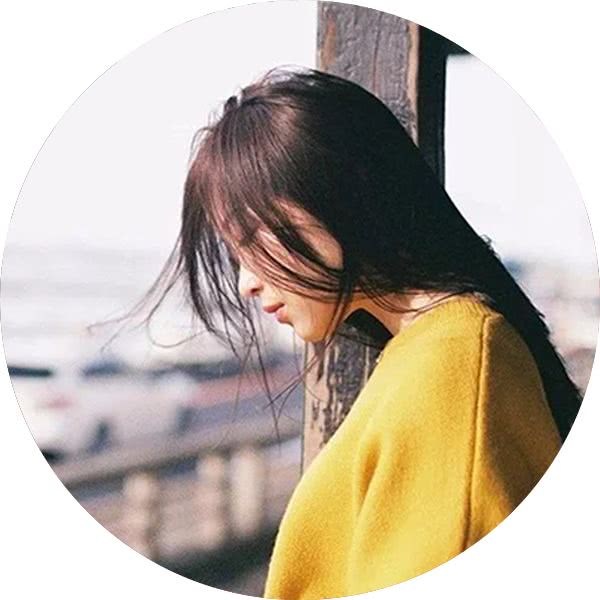This is a batch of thousand-year-old seeds, but Noah's ark after mankind.

Brain hands-on
Listen to the sound of the night with you!
Attention
Buy the seeds of Rhizoma edulis. The germplasm resource bank is provided with maps.
A seed can be a tree or a flower. Seeds develop into plants, and plants form the basis of our lives. From a grain of rice to a table of rice, we are in touch with seeds all the time. But this ecological foundation is crumbling, especially for rare and endangered plants.
According to statistics, about 4600 species of higher plants in China are endangered or threatened, which is much higher than the 10% level in the world. About 200 species of higher plants have become extinct in the past 50 years, with an average of 4 species per year. Apart from ex-situ conservation and the establishment of protected areas, what else can we do to retain these endangered plants? The Kunming Institute of Botany of the Chinese Academy of Sciences is working to build a "Noah's Ark" of wild plants in China-- the southwest China Wildlife Germplasm Bank. With the launch of QQ Browser's "Millennium seed Plan" on Tencent 99 commonweal Day, the Southwest seed Bank, Noah's Ark, is gradually known to more people. As of 2017, 1/3 of China's wild plant seeds have been collected here, and each seed is the last hope of an endangered species.
In 2009, due to the construction of a local reservoir, only three green plum trees in Guangxi (Vatica guangxiensis X L. Mo) were flooded, and the southwest China Wildlife Germplasm Bank sent Zhang Ting to collect seeds and protect the three trees, so that this tiny population could survive.
The collectors in the germplasm bank take a group photo in the field, and Zhang Ting is on the right. The germplasm resource bank is provided with maps.
Zhang Ting is the first seed collector in Southwest China Wildlife Germplasm Bank. Before doing this drudgery, Zhang Ting sold his house for a year when he graduated from college. "if he had persisted in it, he would have made a fortune by now," says Zhang Ting with a smile, but because he loves plants, he still chooses to study botany.
How to collect a qualified seed in the wild? A seed collector not only collects seeds, but also records local forest environment and GPS information. For some berries, they should be treated in advance and dried in the wild, otherwise the seeds will rot and mildew. It can be said that each seed condenses the sweat and risk of the gatherer.
Seed collector Zhang Ting is on his way from Dimaluo to Peacock Mountain pass in Gongshan. The germplasm resource bank is provided with maps.
For example, Dendrocnide urentissima, a plant of Urticaceae, is covered with poisonous needles, which has brought an unforgettable experience to Zhang Ting.
"at that time, I was wearing gloves to prevent being stung by the stings of the hemp tree. When the cut branch fell, I subconsciously picked it up with the other hand. As a result, I was stabbed three times, and a sharp pain spread quickly from my arm to my heart. I gradually felt that it became difficult to breathe, just like being bitten by a snake," Zhang Ting said with a smile. "it was later recorded that the plant's bristles could even kill young animals and children." Zhang Ting didn't fall asleep all night. Washing it with soap didn't work, smashing the leaves of the hemp tree didn't work, and the urine didn't get any better, and it didn't recover until a few days later.
Guo Yongjie, a seed collector, worked hard to collect seeds in Liushitan. The germplasm resource bank is provided with maps.
Of course, if you go deep into the forest, you will find beautiful scenery that is difficult for others to see. Guo Yongjie is another collector in the germplasm bank. He has recently been in charge of seed collection on the islands. From the coral reefs in the Xisha Islands to the Zhoushan Islands off the coast of Zhejiang, Guo Yongjie has witnessed the most beautiful sea scenery in southeastern China. Guo Yongjie loves collecting in the wild and is good at climbing trees. the most unforgettable collection work was when a huge stone was lying at the bottom of the river while collecting seeds in the Dulong River canyon. Guo Yongjie climbed up a tree, and the stone was covered with epiphytic orchids and rhododendrons. It's like walking into a lost secret place.
The cleaning of seeds is very tedious, so it is necessary to get rid of moth-eaten and spoiled seeds first. Qian Ye photography.
After the seeds are collected, they cannot be stored directly. He Huajie, a seed cleaner, said that it takes more than 10 steps and 80 steps for a seed to be collected and stored in a constant temperature and humidity underground cold storage.
Most of the seeds can be bottled and stored after initial drying, germination, re-drying, weighing and sub-packing. Corn, for example, can be dormant in a freezer of minus 20 degrees Celsius for more than 1800 years. But some other seeds are "little masters" who are extremely difficult to serve, and it is not too much to describe them as hypocritical.
In the words of the industry, it is called recalcitrant seed. For example, the seeds of Fagaceae such as Chinese chestnut lose their activity once they lose water. Under the common preservation method, the general water content of seeds should be controlled at 3%, 7%. Other seeds, after dormant in the cold storage, need specific factors to germinate, which poses a big problem for seed conservators.
Yang Juan is doing a germination experiment. Qian Ye photography.
Yang Juan is doing germination experiments, she found that this kind of recalcitrant seeds are not rare. Such as Primulaceae, Solanaceae, Cruciferae and Gentianaceae and other plant seeds need to add some hormones or can germinate. Legumes, Malvaceae and other plant seeds need to be cut through the seed coat to awaken the "sleeping" seeds.
There are also some seed germination factors are very special. Such as salt-loving iris (Iris halophila), is a plant growing in saline-alkali soil, its seeds need some salt to germinate. On the other hand, the seeds of some pine trees can be hung at the top of the tree for several years, and when the forest is caught on fire, it suddenly explodes and germinates and grows on the burned land.
Germinating seeds. Qian Ye photography.
"We keep the seed so that it can be 'awakened' one day. If the seed loses its vitality, what is the point of preservation?" He Jun is a staff member of the in vitro preservation laboratory, and the oldest bottles of orchids in his in vitro preservation library have been kept for more than 30 years. He Jun's isolated library laboratory is full of bottles and cans, each containing an individual of a rare orchid. These individuals are placed in a thermostatic "warehouse", exposed to LED lights, like exquisite small potted plants, and some orchids blossom in narrow bottles.
After the seeds are cleaned, they are sealed and stored in a bottle. Qian Ye photography.
It is with the protection of such a group that many endangered plants are preserved in the form of seeds. Such as Pinus squamataX. W. Li), Guangxi Qingmei (Vaticaguangxiensis X. L. Mo), bamboo raw goat milk (Elaeagnus bambusetorumHand.-Mazz.) and so on. Some seemingly barren places have also made important discoveries. Since 2015, seed collector Yaji Dong has collected more than 150 species of endemic plants in Xinjiang, including Xinjiang wild apple (Malus sieversii) and wild apricot (Armeniaca vulgaris var. Ansu), European plum (Prunusdomestica), etc. The Yili River Valley is likely to be the birthplace of apples, apricots, plums and other fruits we eat today.
It is calculated that a grain of corn can be preserved in the germplasm bank for 1826 years, but only 1.68 years at room temperature. A grain of wheat can be preserved for 3122 years and only 1.17 years at room temperature. The seed of an apple can be preserved for 1632 years, compared with 1.52 years at room temperature. The life of seeds has been greatly extended, and even if we experience doomsday disasters such as ice disasters, earthquakes, typhoons and so on, we can still rely on the seeds in their hands to rebuild the world.
The Southwest Wildlife Germplasm Bank of China, located in Kunming Institute of Botany, Chinese Academy of Sciences, collects 1/3 of China's wild plant seeds, which is known as China's Noah's Ark. Qian Ye photography.
-- END--
Everything is wonderful, there is a praise mall in the flower school.
There are flowers and love, a school of flowers
- Prev

Oh, my God, it's so beautiful.
People who like flowers and trees and bonsai are all romantic people! Profile: Yu Tian was born in Shengzhou City, Zhejiang Province in 1969. Senior Arts and Crafts Artist, Master of Arts and Crafts in Shaoxing City, inheritor of Shaoxing Intangible Cultural Heritage (Shengzhou Root carving). ...
- Next

The most beautiful life has to do with flowers
The brain starts to listen to the sound of the night with you! Paying attention to the intended beauty is nothing more than poetry and flowers. Poetry ripples with the flash of human literary wisdom, from which humanistic elegance is created, while the elegant temperament is never lacking in flowers. Beauty.
Related
- Wuhan Hospital Iron Tree Blooming Result Was Instantly Frightened by the Gardener Master
- Which variety of camellia is the most fragrant and best? Which one do you like best?
- What is the small blue coat, the breeding methods and matters needing attention of the succulent plant
- Dormancy time and maintenance management of succulent plants during dormancy
- Minas succulent how to raise, Minas succulent plant pictures
- What are the varieties of winter succulent plants
- How to raise succulent plants in twelve rolls? let's take a look at some experience of breeding twelve rolls.
- Attention should be paid to water control for succulent plants during dormant period (winter and summer)
- Watering experience of twelve rolls of succulent plants
- Techniques for fertilizing succulent plants. An article will let you know how to fertilize succulent plants.

